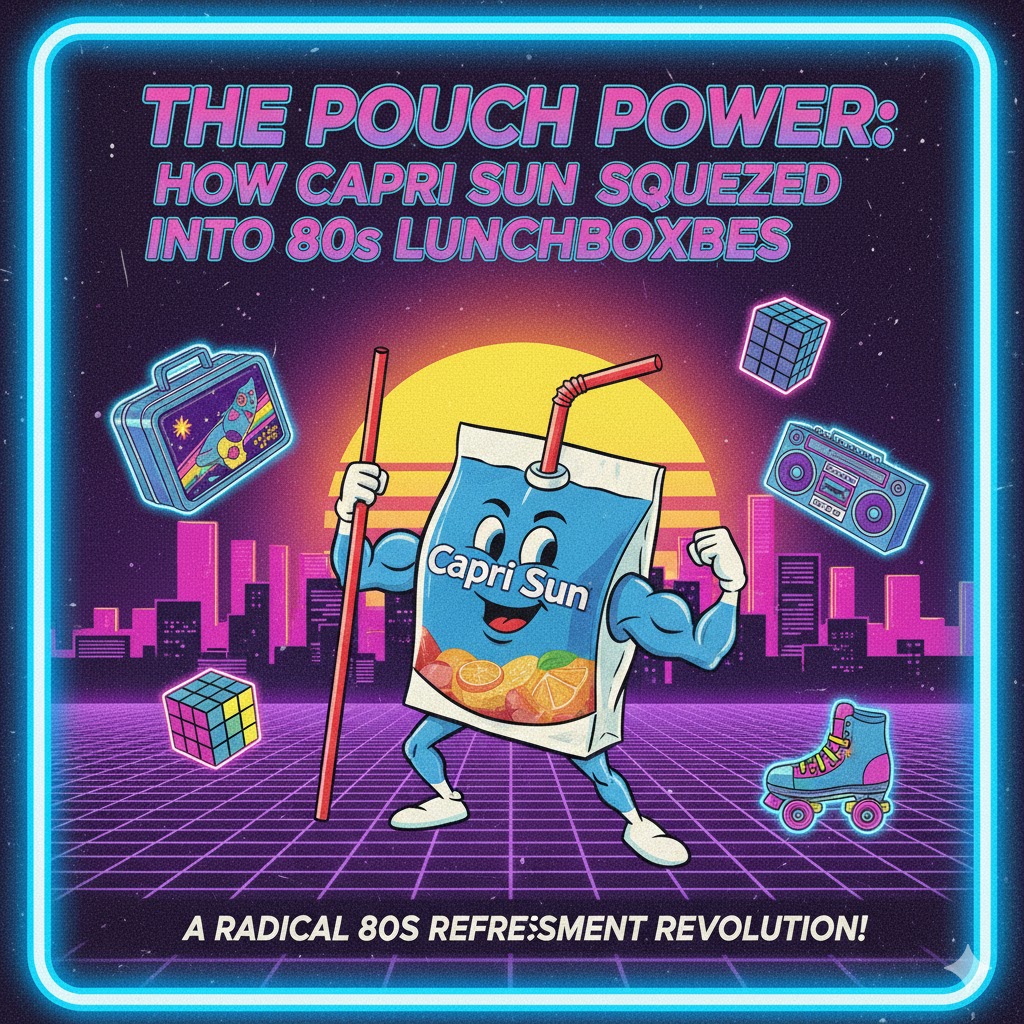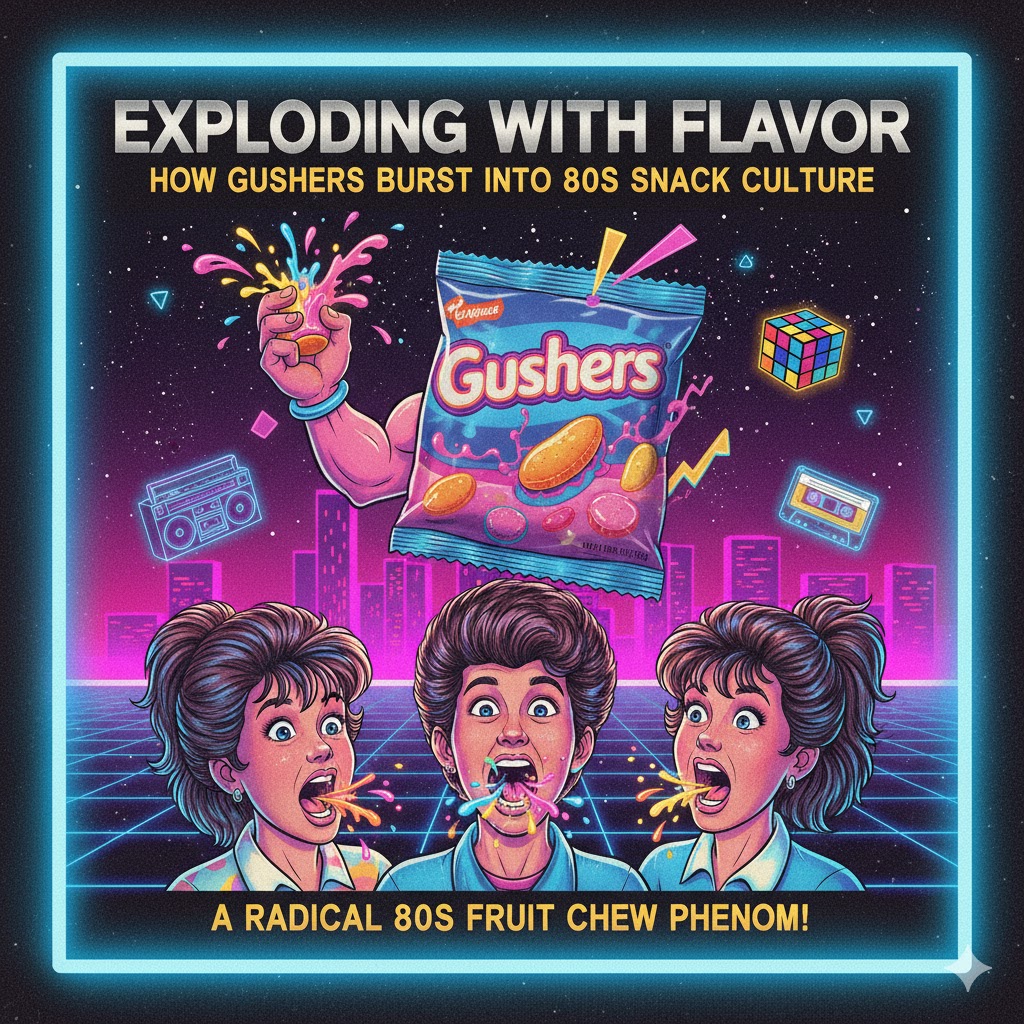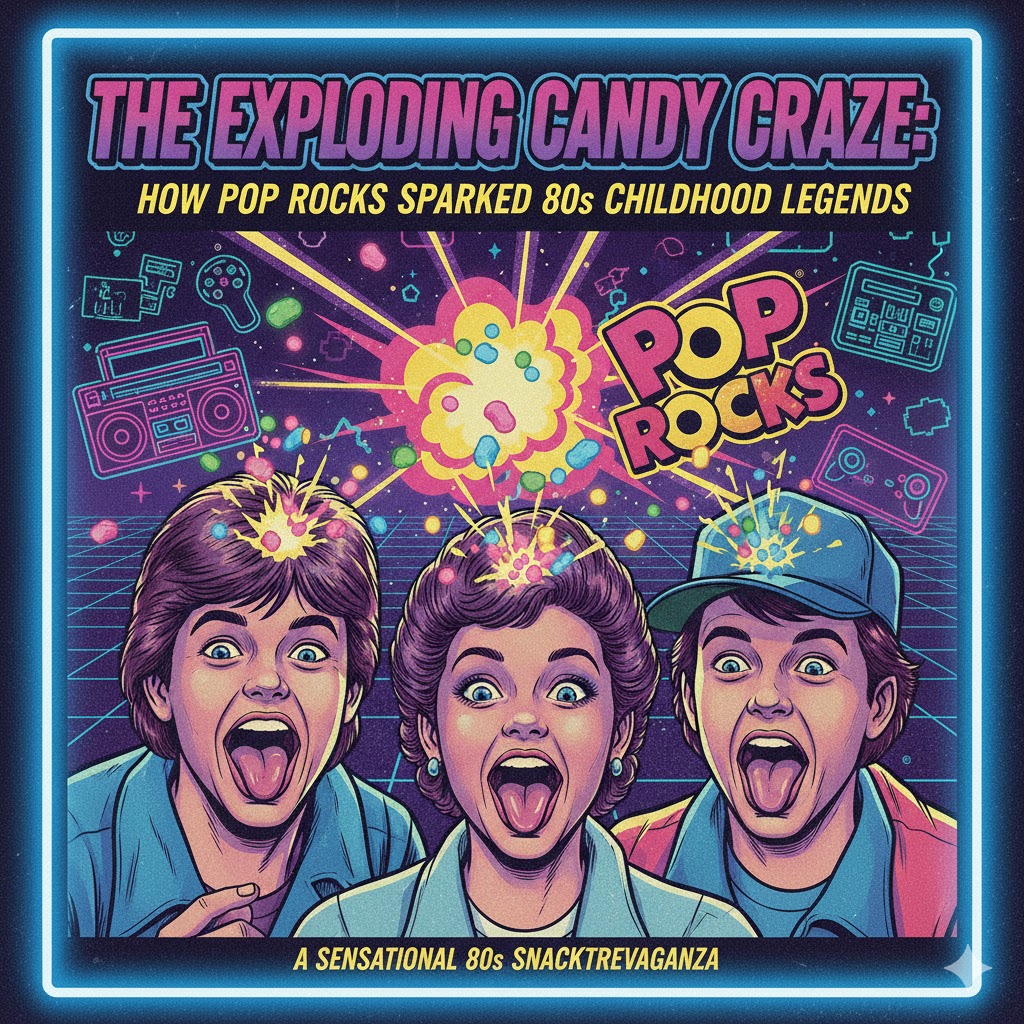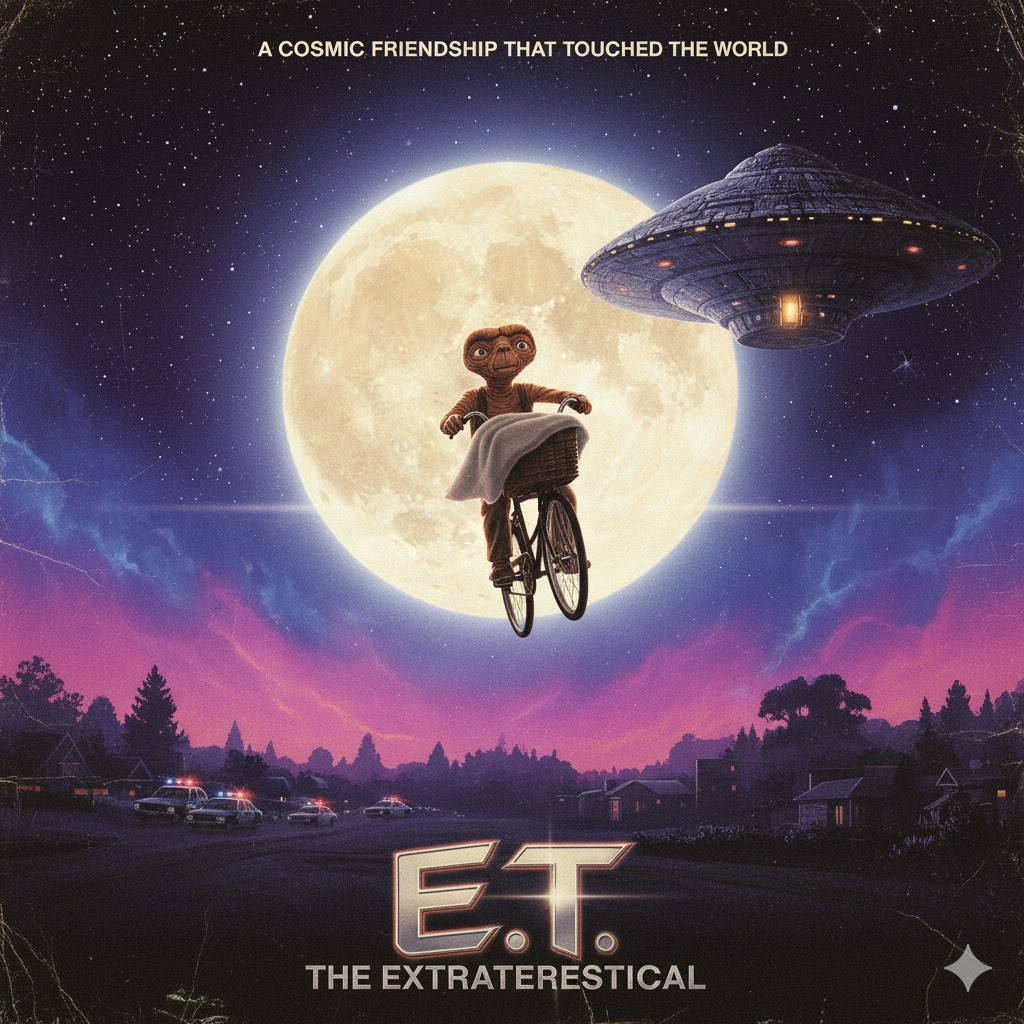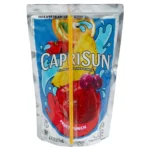 Few beverages left as lasting a mark on 1980s childhoods as Capri Sun. With its iconic foil pouch, colorful straw, and fruity flavors, Capri Sun became more than a drink—it became a symbol of convenience, fun, and youthful independence. For a generation of children, the pouch was synonymous with lunchboxes, playgrounds, and after-school adventures, creating memories that endure decades later. Capri Sun’s entrance into the American market not only changed the way kids consumed juice but also had a subtle yet profound impact on 1980s pop culture, influencing marketing, snack trends, and the social rituals surrounding childhood refreshment.
Few beverages left as lasting a mark on 1980s childhoods as Capri Sun. With its iconic foil pouch, colorful straw, and fruity flavors, Capri Sun became more than a drink—it became a symbol of convenience, fun, and youthful independence. For a generation of children, the pouch was synonymous with lunchboxes, playgrounds, and after-school adventures, creating memories that endure decades later. Capri Sun’s entrance into the American market not only changed the way kids consumed juice but also had a subtle yet profound impact on 1980s pop culture, influencing marketing, snack trends, and the social rituals surrounding childhood refreshment.
Capri Sun was first introduced in West Germany in 1969 by the German company Rudolf Wild & Co., but it wasn’t until the early 1980s that the beverage made its way to the United States. Its arrival coincided perfectly with the burgeoning health-conscious movement, which encouraged parents to seek out juice-based drinks as alternatives to soda. Unlike conventional bottled juices, Capri Sun came in a flexible, single-serving pouch, a design that was revolutionary for its time. The pouch allowed for portability, easy storage, and reduced waste, making it ideal for school lunches and outdoor activities. The packaging itself quickly became a key part of the brand’s identity, setting Capri Sun apart from the competition and embedding it into the cultural lexicon of the decade.
The unique packaging and convenience of Capri Sun contributed directly to its impact on 1980s pop culture. For the first time, children could enjoy a juice drink that required no cups, refrigeration, or additional utensils. The novelty of piercing the pouch with a straw created a small ritual that was both fun and empowering. Kids learned to enjoy the tactile experience of holding the soft foil, feeling it compress as the liquid was consumed, and listening to the slight rustle of the pouch—a sensory experience that added to the drink’s appeal. This combination of portability, interactivity, and novelty made Capri Sun an instant favorite, particularly for school-aged children who valued both autonomy and play in their daily routines.
Marketing and advertising played an essential role in cementing Capri Sun’s place in 1980s pop culture. Television commercials showcased active, smiling children in sunny outdoor settings, emphasizing the drink’s association with energy, fun, and wholesome enjoyment. The brand positioned itself as a convenient yet stylish beverage choice, highlighting the pouch as a modern, futuristic alternative to traditional juice boxes and bottles. Advertisements often featured vibrant animation, catchy jingles, and bright colors, capturing the playful energy of the decade. These marketing campaigns reinforced the idea that Capri Sun was not just a drink—it was an accessory for adventure, a companion to school days, playtime, and family outings.
Capri Sun also influenced the social dynamics of childhood in the 1980s. The pouch’s unique design made it portable and easy to share, turning snack time into a social experience. Children would trade flavors, demonstrate tricks for squeezing the pouch efficiently, or challenge each other to finish their drink without spilling—a subtle form of play that encouraged interaction and friendly competition. The drink became a social currency, with certain flavors, like Fruit Punch or Pacific Cooler, achieving particular popularity. In playgrounds, lunchrooms, and birthday parties, carrying a Capri Sun was a way to participate in shared cultural rituals, a tangible representation of belonging to the cohort of kids who were “in the know.”
The influence of Capri Sun extended beyond social play into pop culture media. Television programs, cartoons, and teen-oriented commercials often depicted characters enjoying Capri Sun, embedding the drink into visual representations of 1980s childhood. The pouch became an iconic image: a crinkled rectangle of shiny foil, punctuated by a straw, with bright, bold graphics on its front. For children watching these shows, seeing peers or favorite characters consume Capri Sun reinforced its desirability, solidifying its status as a must-have item for lunchboxes and snack times. The visual recognition of the pouch itself became part of the shared cultural memory, creating immediate associations with fun, youth, and energy.
Capri Sun also played a role in the broader evolution of the juice and beverage market during the 1980s. Its success encouraged other companies to experiment with portable, single-serving packaging, ultimately shaping the development of juice boxes, squeezable yogurt pouches, and other convenience-oriented snack options. The brand demonstrated that packaging innovation could be as important as flavor, and that children’s preferences could be influenced as much by form and presentation as by taste. In this way, Capri Sun contributed to the rise of convenience-oriented snacking and the prioritization of child-friendly design in consumer products.
The drink’s cultural impact was reinforced by its connection to health-conscious trends of the 1980s. As awareness of sugar intake and diet-related concerns began to grow, Capri Sun was often positioned as a “better-for-you” option compared to soda and artificially flavored beverages. Parents appreciated the perceived nutritional benefits of fruit juice, while children loved the fun, interactive nature of the drink. This dual appeal made Capri Sun a bridge between generational priorities: a product that allowed kids to feel autonomous and entertained while providing parents with reassurance about its relative wholesomeness.
Capri Sun also reflected broader themes in 1980s pop culture, particularly the emphasis on mobility, independence, and leisure. The decade celebrated outdoor activities, organized sports, and after-school adventures, and Capri Sun’s packaging and portability made it ideal for these pursuits. Children could carry a drink anywhere without worrying about spills, refrigeration, or extra containers. The juice pouch became a symbol of practicality meeting fun, perfectly aligned with the active, playful lifestyles promoted in advertisements, television programming, and lifestyle media of the era. Capri Sun, in essence, became part of the soundtrack of childhood activity—always present in bike rides, soccer games, and neighborhood adventures.
Its impact extended even into the world of fashion and merchandise. The bright, colorful branding of Capri Sun lent itself to a range of accessories, from lunchboxes and backpacks to stickers and novelty items. This integration into daily life strengthened its presence in children’s consciousness and allowed the brand to maintain relevance beyond the beverage itself. Capri Sun was no longer just a juice drink; it was a cultural symbol, woven into the everyday experiences of a generation and contributing to the shared rituals and aesthetics of 1980s youth culture.
One of the most enduring elements of Capri Sun’s influence is the nostalgia it evokes today. Adults who grew up in the 1980s often recall the foil pouch with affection, remembering both the tactile and auditory experience of drinking from it. The sound of squeezing the pouch, the rustling of the foil, and the burst of sweet, fruity liquid are sensory memories that transport many back to school cafeterias, birthday parties, and summer afternoons. Capri Sun has become emblematic of a simpler, carefree time in childhood, when small pleasures could create lasting cultural impressions.
The drink’s legacy also demonstrates the power of innovation in everyday products. By transforming a simple juice beverage into a multi-sensory experience, Capri Sun showed that ordinary items could be elevated to cultural icons through design, marketing, and attention to user experience. Its success paved the way for other interactive snack and beverage products, reinforcing the notion that children’s products could be both fun and practical, imaginative and convenient. Capri Sun exemplified how thoughtful design could resonate emotionally, socially, and culturally with a wide audience.
Moreover, Capri Sun reflects the 1980s ethos of blending fun with practicality. The decade celebrated gadgets, games, and innovations that made life more convenient while simultaneously entertaining, and Capri Sun’s pouch perfectly embodied this philosophy. The product was more than just juice; it was a tool for socialization, a conversation starter, and a playful element of everyday life. Its presence in the lunchroom, at playgrounds, and in media reinforced the idea that childhood experiences could be interactive, delightful, and culturally shared.
The drink’s enduring appeal lies in its ability to evoke memories of freedom and exploration. For many children, Capri Sun was more than hydration; it represented autonomy, choice, and the thrill of small adventures. Whether enjoyed during a long school day, a summer bike ride, or a neighborhood picnic, the foil pouch became a vessel for the imaginative possibilities of childhood. Its design encouraged experimentation, whether in flavor combinations, sharing rituals, or playful competitions with friends. Capri Sun’s integration into these daily moments gave it a significance that extended beyond taste, embedding it into the very fabric of 1980s pop culture.
Ultimately, Capri Sun’s impact on 1980s pop culture is multifaceted. It redefined children’s beverages, influenced packaging design across the food industry, and became a social and cultural icon. The juice pouch reflected broader trends in youth autonomy, health consciousness, and playful experimentation. It provided a shared experience among peers, contributed to the sensory and imaginative landscape of childhood, and became an enduring symbol of the decade’s approach to fun, convenience, and style. For those who grew up in the 1980s, Capri Sun remains an evocative emblem of the joys and freedoms of youth, a reminder of the ways in which a simple innovation can leave a lasting cultural imprint.
Capri Sun stands as a testament to the power of design, marketing, and timing in creating a cultural phenomenon. Its foil pouch, bright flavors, and playful spirit captured the essence of a generation, influencing childhood rituals, social interaction, and consumer expectations for decades to come. More than a beverage, Capri Sun became an experience, a symbol, and a shared memory, solidifying its place in the pantheon of 1980s pop culture. From school cafeterias to playgrounds, from television ads to lunchbox conversations, Capri Sun encapsulated the sights, sounds, and tastes of a transformative era, leaving an indelible mark on the memories of all who drank from its iconic pouch.
